Lessons from the Foothills Trail
Field Notes II.XXVIII: Backpacking and photography lessons learned from thru hiking the Foothills Trail in South Carolina
Welcome to Field Notes!
I am on another adventure as this post is being published! Honduras! My son agreed to go on a mission trip with The Bridge Community Church in Athens, Ga, but then found out he had a schedule conflict. They offered for me to take his place and I jumped on the opportunity!
I have no experience with Honduras, and the idea of diseases such as malaria or dengue fever, or of violent criminals, is just a bit worrisome. But, I am taking rational precautions and I’ve always supported the idea of doing things that scare us! Fingers crossed that I come back with good photos and a story to tell.
So, today while I am away, I’m bringing you a few insights into backpacking that I learned on my thru hike of the Foothills Trail in early May. Lets get into it!
In an earlier edition of Field Notes I shared this link to the pack weight break down of stuff I carried through 2023.
I know I can save a lot of weight with a pack, sleeping bag/quilt, and sleeping pad upgrade. However, those items can be pretty expensive. I focused on a couple of cheaper upgrades and just leaving unnecessary things behind.
One cheap upgrade was getting a Toaks 750ml titanium cooking pot for $25. I had been using the GSI Microdualist pot, which was part of a 2 person set I bought when I hoped my son would be coming with me on more of these trips. It is a great pot, but needlessly large for 1 person. The inexpensive upgrade not only saved me weight, but also a bit of volume inside my pack.
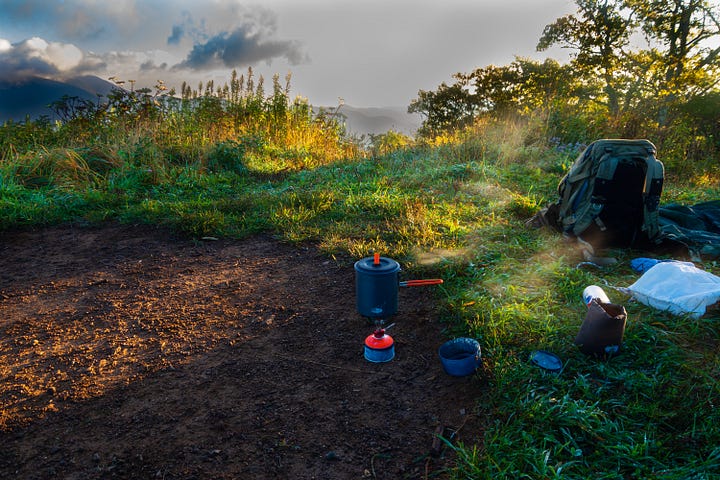
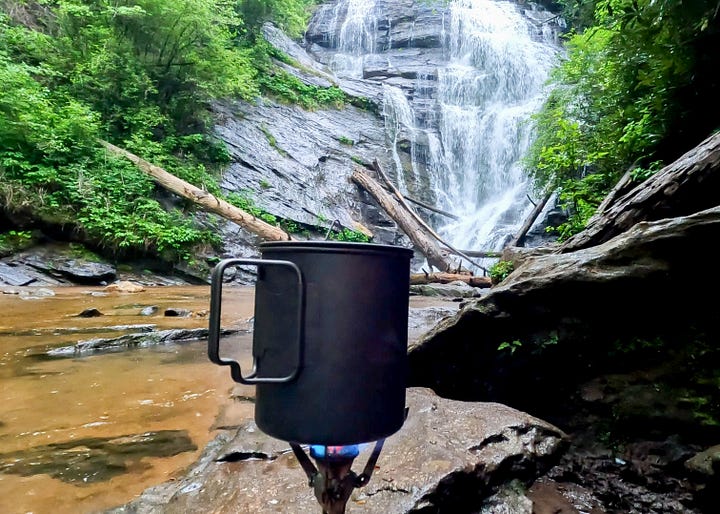
Another upgrade was with my water filter. Way back when, I used pump water filters. They had a hose with a debris filter and float that you’d dip into a stream, the main water filter with attached pump mechanism, and another hose that ran to your water bottle. They worked, but never well, and they were incredibly cumbersome.
I began seeing advertisements for a water filter called the Grayl that was seductively simple. It involved scooping water into an outer cup. The filter was then attached to the bottom of an inner cup that you press into the outer. With about 8 seconds of pressing the inner into the outer, you’d have almost a liter of water. The Grayl was great at first, but I got it well before I considered pack weight. It is VERY heavy. And the filter? It was advertised to last about 3 years. I found that after less than 1 year and only a few trips it became clogged. Back flushing helped slightly. It still worked, but it took a lot of force for up to a minute to filter water through.
I looked at other options. Surprisingly, for almost as much as a new Grayl filter, I was able to get a Sawyer Squeeze. I first tried it in the Panthertown Valley. This thing is incredibly easy to use and is tiny compared to the Grayl. No wonder it is a go-to item for thru hikers! I used it on the Foothills Trail and had no problems. Sawyer also donates 90% of their profits to charities and actively works to provide clean water to problem areas across the world. It is a great company to support!
The other big change I made specifically for the Foothills Trail was my camera tripod (there’s an image of it later in this post). I opted to carry an older, cheaper, and much smaller tripod than I normally carry for a photo trip. The reasoning for this was that the primary purpose of this trip was the trip itself. Photography was a secondary goal.
Otherwise, I focused mainly on just leaving behind unnecessary things. Don’t pack your fears, as they say. Below is my pack break-down for the Foothills Trail. You can see at a glance that I was able to reduce it by almost 7 lbs. That was good, but it is still a work-in-progress, and likely to vary a bit from trip to trip depending on weather, distance, etc.
I wish these two charts kept consistent color coding to help the comparison, but you get the point.
My feet and calves hurt on this trail. The primary reason for this is that I was hiking in fairly new trail shoes. I intended to break them in over several weeks leading up to the trip, but I injured my calf and couldn’t do much hiking at all in the couple of weeks prior. Ultimately, I think I had about 8 miles on these shoes before the Foothills Trail.
I wore Altra Lone Peak 7’s. The shoes fit great and actually did not need much breaking in at all. The problem was that these shoes are zero drop, meaning the cushioning on the sole is even from heel to toe. Most shoes have a slightly elevated heel. This little bit of difference was enough to change the activation of my calf and feet muscles in a way that made them very sore for the first couple of days.
The lesson here is that I need to train in this type of footwear much more frequently leading up to the next trail and/or wear these as daily wear.
Water was plentiful along almost the entire trail. The most I ever carried while walking was 1 liter. On past hikes at higher elevation I have carried 2 or 3 liters. I did have very little hunger on the trail, though, and this can be a symptom of dehydration.
The problem wasn’t finding water, it was accessing the water I had. My Osprey Aether pack is old. Its side pockets are designed for water bottles, but I had a very hard time reaching them without taking the pack off. As I was hiking steadily through the day, I never wanted to drop my pack just for a sip of water. I drank way less that I should have, even though there was water all around.
I’m now looking for a minimalist way to add a pouch or other method to attach a water bottle to either the front hip belt or strap of the pack for easier access.
Food was a bit of a problem. First, I had a hard time estimating my needs and ended up carrying too much. I just cannot bring myself to do a lot of math calculations to break down the different foods into calories per day. On top of this, most of my dinner meals were homemade dehydrated meals. I had no clear way of estimating how much nutrition was in a cup of these meals.
Breakfast was easiest. I had muesli (breakfast oats) mixed with vanilla protein powder every day. A bit on the too sweet side for me, but simple and ended up being the meal I looked forward to the most each day.
Like I said, the dinners were mostly the homemade dehydrated meals. These were either dehydrated ground beef or dehydrated shredded chicken, mixed with a 50/50 blend of dehydrated lentils and quinoa. I tried this for the first time in Panthertown Valley and enjoyed it. Here, at the end of the day, I had to make myself eat it. Maybe it was the heat. Maybe it wasn’t the fuel my body wanted. I did pack one extra dinner, just in case I had to extend the trip by a day. Also, one of my dinners was a store bought backpacker meal. This one ended up being the most enjoyable of all.
Now, about lunch. In my reading up on thru hiking strategies, most prefer to eat snacks on the go, rather than spend time eating a meal on a dedicated lunch break. The concept sounded good, but I had trouble finding foods I could do this that would even remotely align with a diet I was trying to maintain. Ultimately, what I came up with was a Rx Bar energy bar at around lunchtime and mixed nuts with added dried pineapple and apricots as snacks throughout the day. I divided this up into rations for each day.
Well, the day before I left on the trip I read this post by
, where she states-A word on nuts: It’s tempting to lean hard on nuts as a food source on trail, as they have such high calories/ounce. Unfortunately, nuts are the first thing hikers go off of on the long trails, and hiker boxes are full of trail mix. The only nut I can stand at this point is pistachios, and only in small quantities, and I find all nut butters repulsive. It’s great to pack a bit of nuts, but keep in mind that they’ll likely become the least favorite thing in your food bag.
Haha! It was too late to re-pack something else, but she was exactly right! I thought the fat in the nuts would give me longer burning fuel. Maybe they are harder to digest than carbs, though. After the first day, I wanted nothing to do with them. I picked out all of the dried fruit and forced myself to eat the nuts when I felt my energy was depleted.
Related to food, I also had a difficult time estimating how much fuel I would need. I’ve heard the arguments for cold soaking, but I really enjoy my morning coffee(s) and I like a hot dinner, too. So, I brought my stove and 3 small fuel canisters. With these, the best method I’ve come up with is to count boils. I planned for 3 boils per day- 2 morning coffees and 1 for dinner. It would also give me a little extra if I ever wanted a late day coffee.
With the heat and activity, a late day coffee never crossed my mind. Also, even with counting boils, I really can’t reliably predict how many boils a canister has in it. It depends a lot on weather and altitude. Over these 5 days I used about one and a half canisters. The third was untouched and just extra weight.
I definitely packed my fears with the fuel. This lesson is pushing me towards a lower estimate of fuel needs. Worst case, I can cold soak dehydrated meals and maybe I’ll pack a packet or two of instant coffee, just in case. It would be much lighter than an extra fuel canister!
With photography, I kept my camera in its case in my pack as I walked and only took it out when needed. This worked the best, with the photography being a secondary pursuit. Having the camera on a clip on my shoulder strap was a bit too uncomfortable for a long hike.
With electronics come battery issues. My electronics included my phone, which was mainly for navigation and occasional “I’m ok” text messages, my GoPro Camera, and my Pentax K70 DSLR.
I discovered that I can place my phone in airplane mode. This turns off the cell signal and prevents it from constantly searching for a signal. But, it still will track a GPS position. I can open my navigation app, Gaia GPS, that has my route plotted on it, and see exactly where I am. Airplane mode extends my phone’s battery life tremendously! After a full day of being on, it only dropped to around 60% at the lowest.
I filmed throughout the day with the GoPro. My clips are usually very short, between 10 seconds and perhaps a couple of minutes. Each battery allowed for a full day of this type of use. I would swap batteries before bed and charge the drained one overnight.
It is very difficult to predict how much battery power I need for the DSLR. The Pentax batteries are known to not last very long. However, so much depends on how much use they get and I have found that they are very sensitive to the cold. I brought 5 batteries with me for the trip, but I also brought a charger, just in case. For the most part each battery easily lasted the day because I just wasn’t using the camera all that much. The exception was the top of Sassafras Mountain. The temperature drop might have been a factor, but I was also taking a lot of photos. I went through two batteries in the few hours I was there.
To charge all of this, I brought 2 power banks. One is an Anker 10000Mah and the other is a cheaper one I bought off of Amazon. It is a 32000mAh with a built in solar charger. I don’t expect the solar panel to work very well, but its there for an emergency.
To summarize here, I packed a lot for powering the photography and film. I could have gotten by with less. However, the photography is important to me and I feel less guilty carrying this weight as opposed to other unnecessary items.
Here we are at the ‘Post too long for email’ point (my fellow Substack writers understand). I suppose I could have whittled down most of the above to just- get lighter stuff and carry less of it. There are actually a lot of smaller practical points I learned, but I think I hit the highlights.
But what did I really LEARN from the Foothills Trail?
How about a trust in myself that cannot be described in any form of language; a confidence purchased with footsteps in the rain, when nature is bearing down and no one is coming to help.
I learned that life itself is a work in progress. We learn enough to not die doing something. Then we do it, and do it a little better the next time. The best of us did it the same way.
I learned to dance with salamanders.
I learned that when there is a chance of death, however slight, my eyes sharpen and skin tingles. I learned to live without. To make do. To suffer. And, under their instruction, I learned tranquility.
I heard the subtle taps of raindrops on rhododendrons, and the sound now fills the blank spaces between my heartbeats. I see wind moving in treetops and know that I am the wind, and that I am the trees.
Alone and without the distraction of any entertainment, I learned to live with myself.
I learned the sweet chill feeling of bathing in mountain streams. I also bathed in loneliness, and learned the sweet love of a welcome home.
There’s more. There is infinitely so much more. These are the mysteries the mountains whisper to you when you ask for answers from a rainbow. I learned that you can only hear them after surviving the hailstorm.
I sincerely hope that those of you who have read this far find some way, big or small, to begin exploring these mysteries yourselves!
So, what’s next? Honestly, after completing the Foothills Trail I feel physically capable of completing any long trail out there. There is a mental aspect of sustaining the effort for months at a time, and in this area I remain untested. The big hurdle for me, and likely for many people, is only how to schedule these types of thru hikes while still supporting myself and my family.
The Bartram Trail is the next one I have my sights on. It starts in North Georgia, very near the Foothills Trail, and continues north into North Carolina for just over 100 miles. It would require a re-supply in Franklin, NC. I think I could do this in about a week, or just a little bit more. There are other long trails, but I think this one is next.
And, of course, in between the longer trails I have plans for many more shorter photography trips!
What are your questions? Gear, logistics, techniques, methods- I’ll do my best to answer them. Drop them here, just keep in mind I probably won’t be able to reply till I get back in town in a few more days.
Are you getting something out of Field Notes? Help me make it better! You can do this by sharing, subscribing, or supporting with a paid subscription.




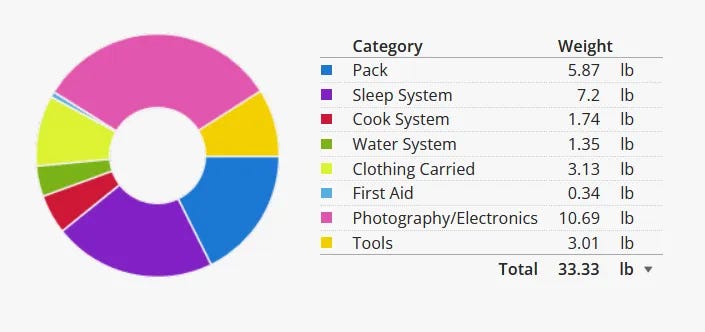
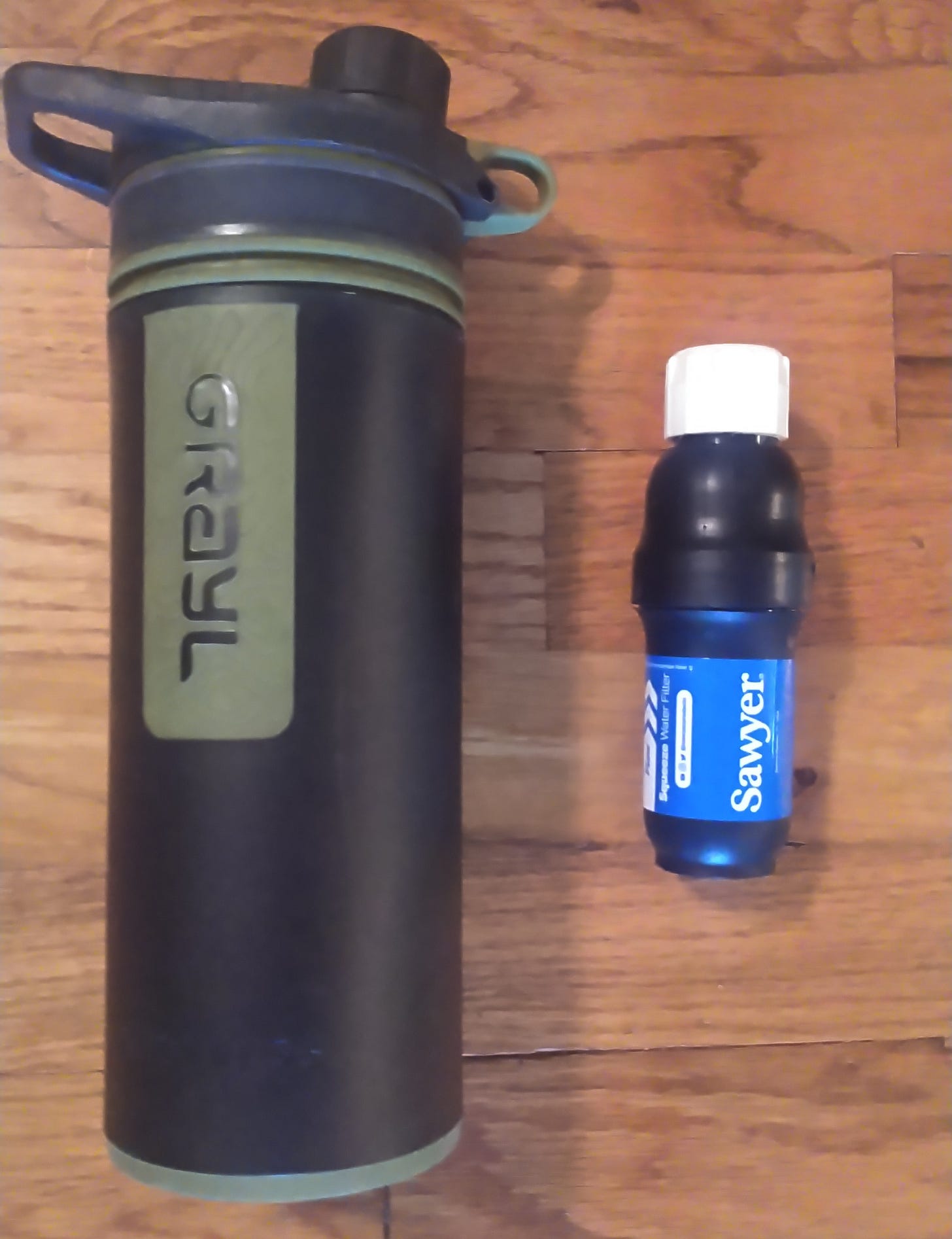
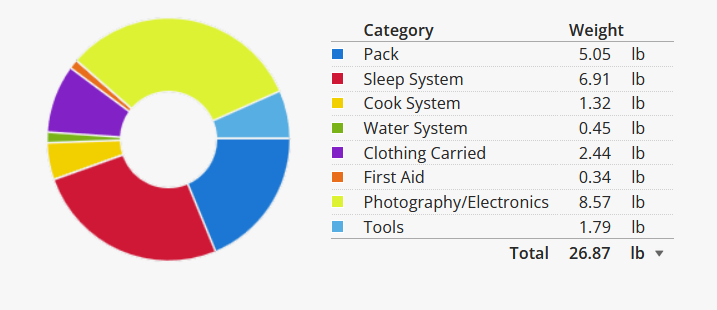

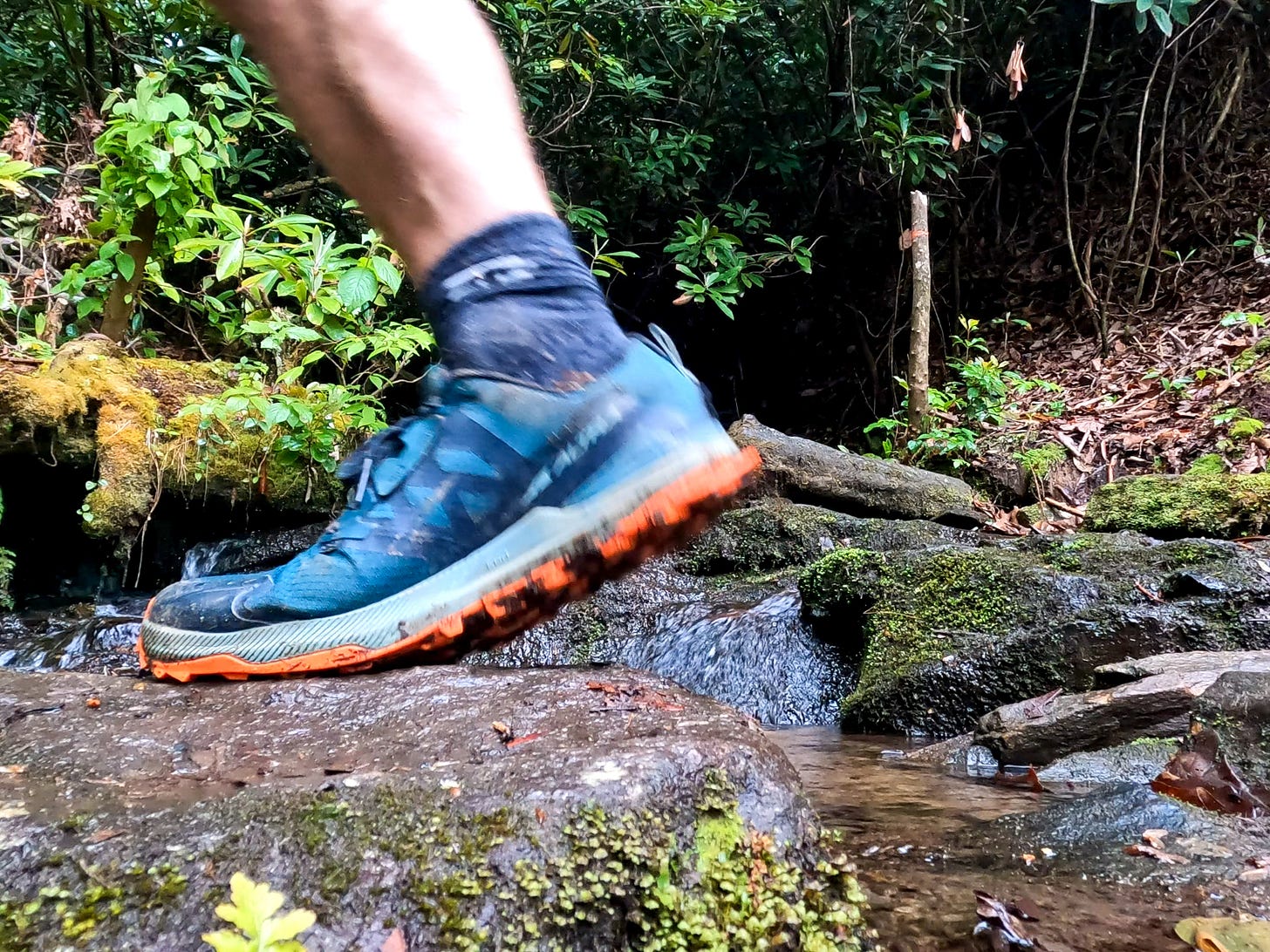



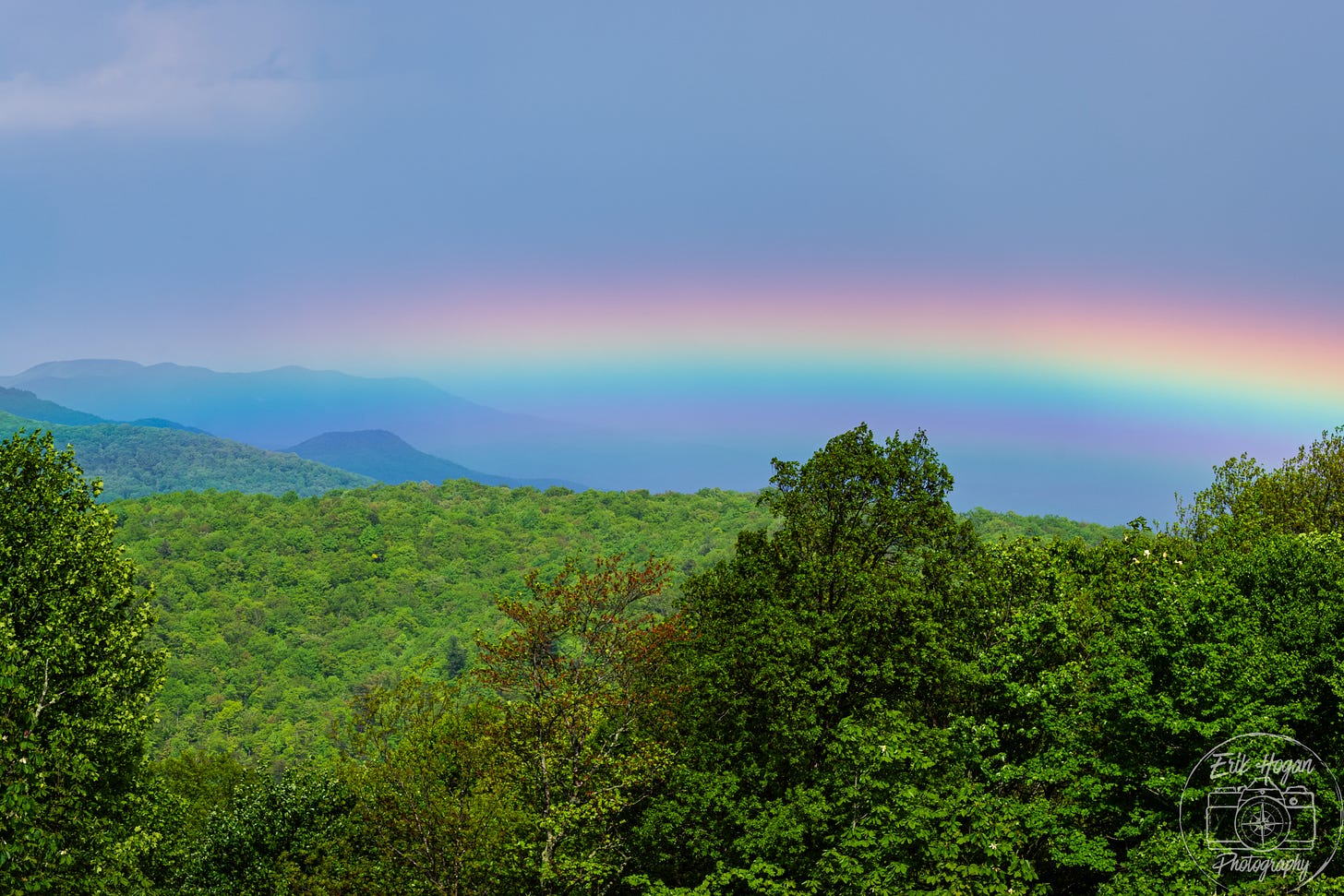



Greetings from Stateside, and hello to you in Honduras! I hope you're having a blast. I definitely did, reading this summary, and reliving your trip with you. My nerdy side was geeking out over your pack weight breakdowns and all those "boring logistics" things.
I can't find it right now, but there was a YouTube video I watched recently where a guy was reviewing a nifty gadget (a tube-like straw, similar to the straw you would use to drink from a water bladder) that attaches to his water bottles (that are nestled in his pack side pockets) and he can drink out of it on the go. This eliminates the need to buy and use a water bladder (which can sometimes sprout leaks) and it eliminates the problem you were describing, which is the "I can't reach my damn water bottles and now I'm dehydrated!" I can try harder to track that video down if you're interested.
Also...you didn't eat lunch? Damn, I admire the grit. I ate protein bars for breakfast, but lunch was my first "proper" and large meal of the day. Trail mix was a go-to! I never got sick of that. Plenty of my friends did though. But Knorr sides.....that's a different story!
Anyway.....on the "What did I LEARN from the trail" section....that, my friend, reads like poetry. And now I need to figure out how to quote sections of a Substack post so I can re-post them in my notes.. "These are the mysteries the mountains whisper to you when you ask for answers from a rainbow.".... SHIVERS!!!! So happy for you! And hope to read more about your long-distance backpacking adventures!! (I'll keep on nudging (nagging) about a long AT hike...!) Excited to hit the Foothills Trail in November!
This is great Erik - all the lessons about gear and stuff are good, but ultimately it comes down to the stuff you write about at the end that really matters.